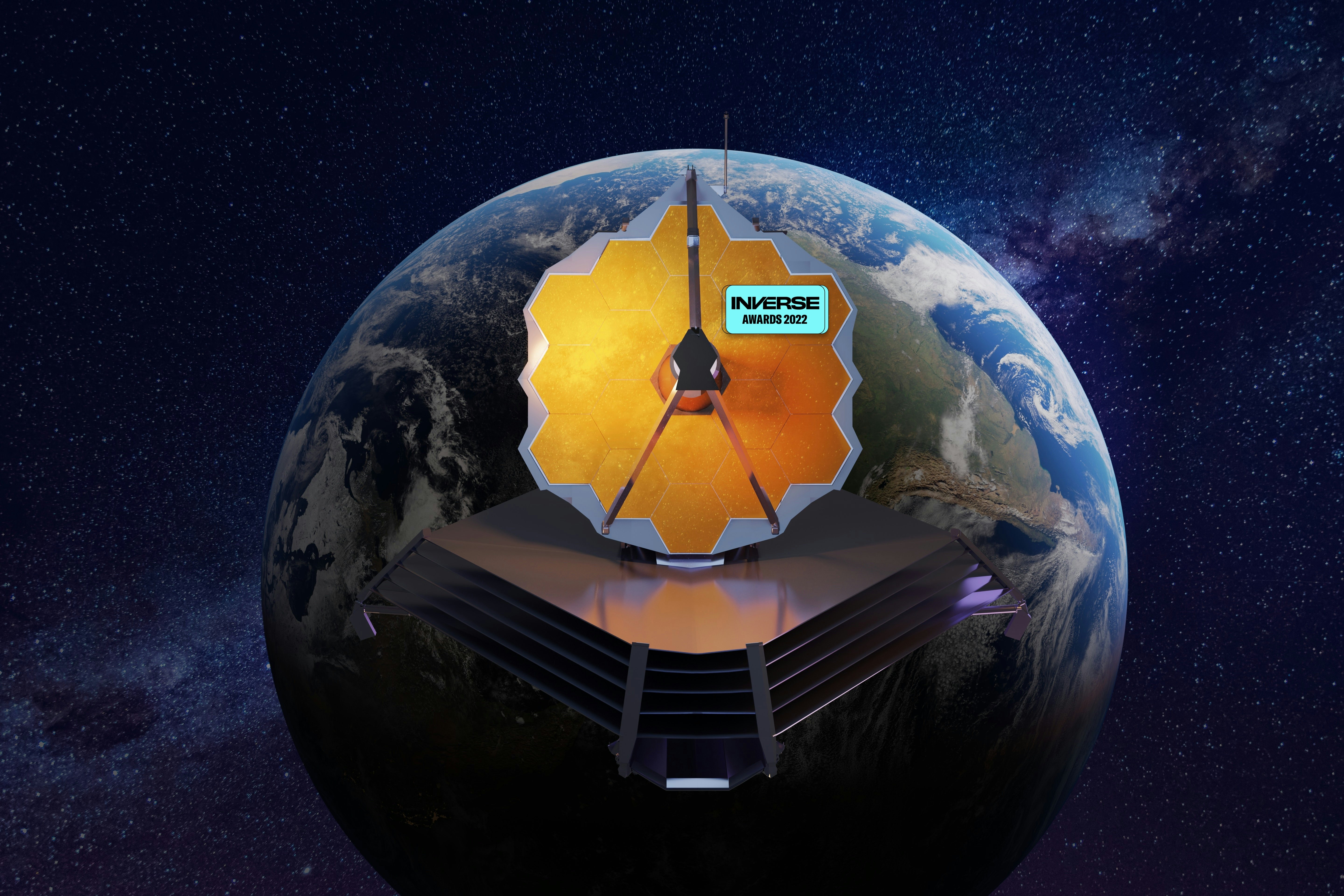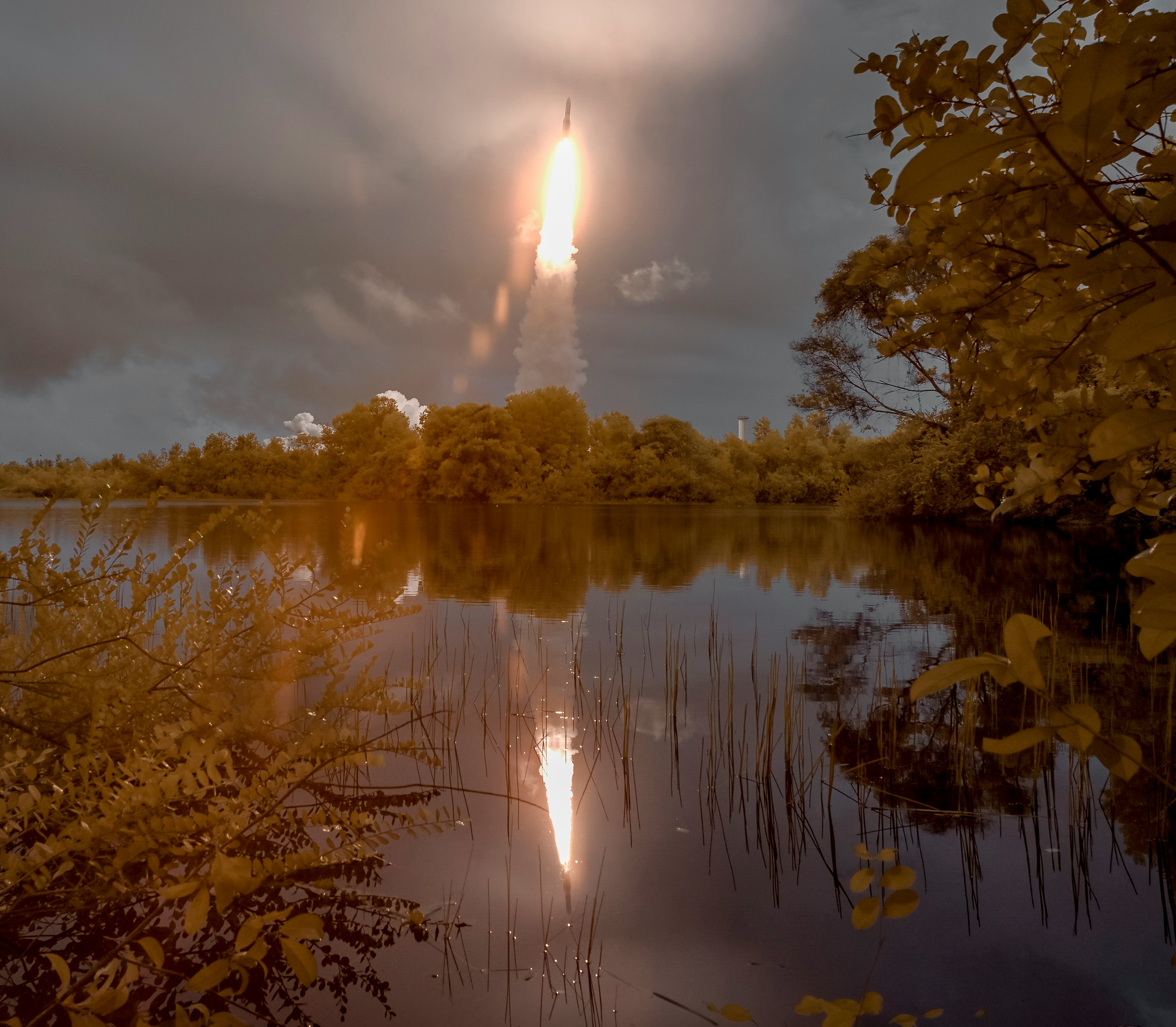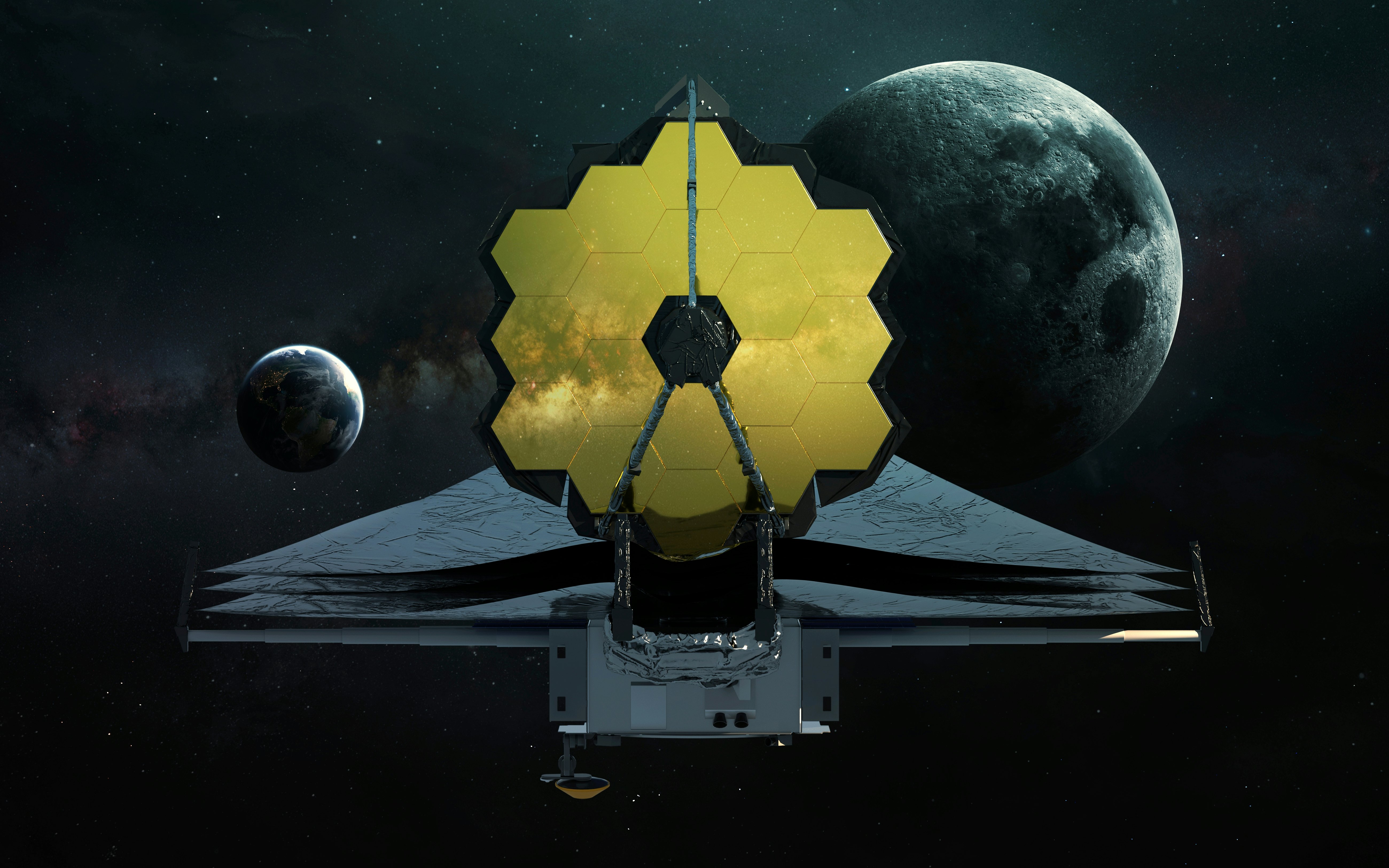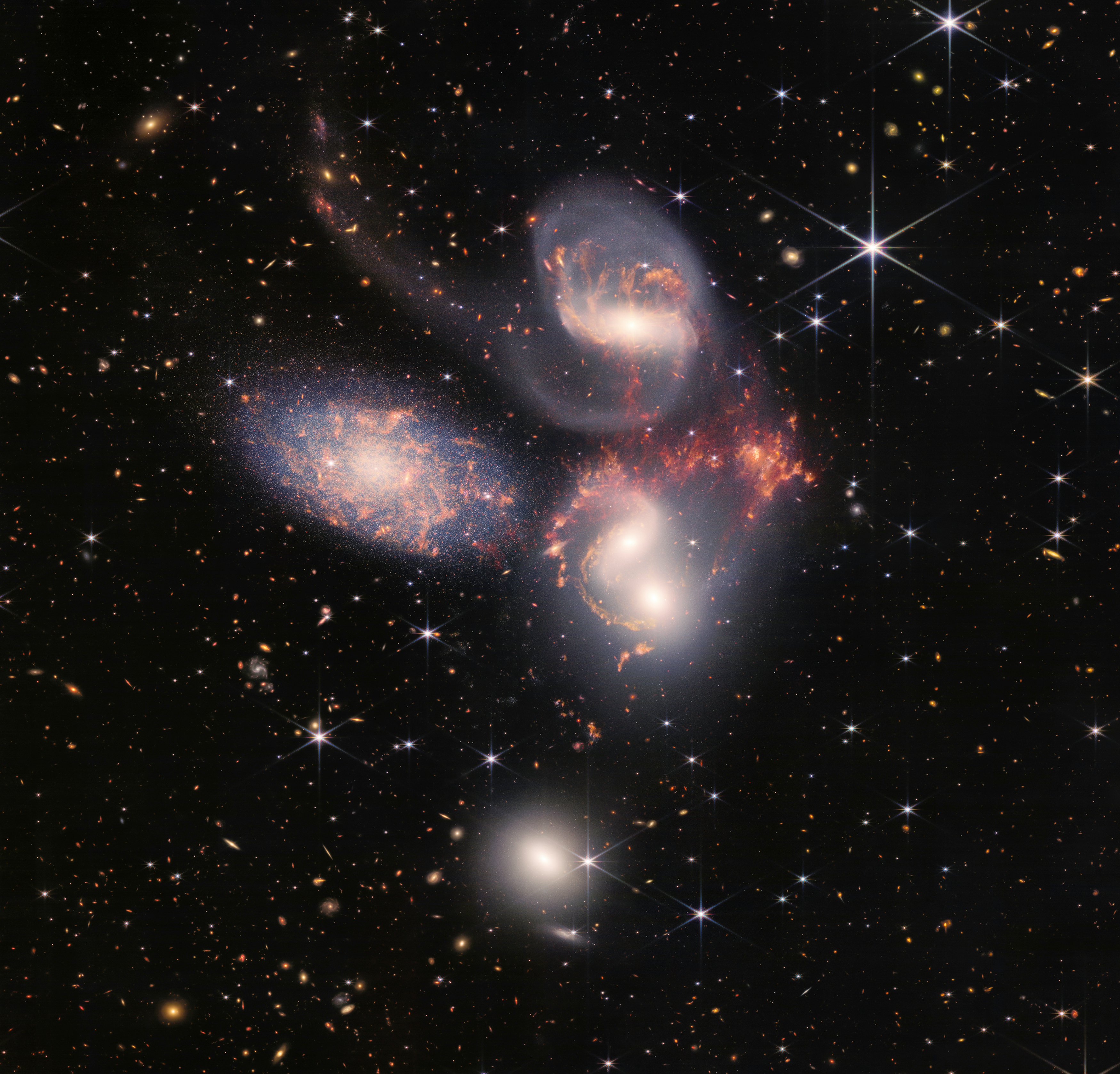
On June 15, Klaus Pontoppidan was about as relaxed as a sleep-deprived project scientist in charge of a $10 billion telescope could be.
Pontoppidan’s team at the Space Telescope Science Institute (STScI) in Baltimore had been assigned to the James Webb Space Telescope (JWST) Early Release Observations (ERO) program and tasked with capturing and processing five images to showcase NASA’s new flagship observatory’s capabilities for the public. Each image had to demonstrate the capabilities of the instruments on the space telescope and highlight the kinds of science these instruments could make possible. They had a strict deadline: NASA wanted to reveal them to the world on July 12.
Despite the task at hand, Pontoppidan had breathed at least one sigh of relief: One of the more difficult observations was already in the bag. His team had just measured the spectrum of an exoplanet, capturing the starlight filtering through the atmosphere of the gas giant HAT-P-18b some 530 light years from Earth, which can tell scientists which chemicals are present in the exoplanet’s atmosphere.
“It was great, and I could breathe this huge sigh of relief because we have to have an exoplanet in there,” Pontoppidan tells Inverse. “We couldn’t have this whole package completed without an exoplanet; it’s such an important science case for JWST.”
Then he got the Slack message from the team’s resident exoplanet expert, STScI astronomer Néstor Espinoza.
“OMG. The spectrum is very weird,” Espinoza wrote to Pontoppidan, who responded hopefully, “But weird in a good way?”
“We had to scramble,” he says. “We didn’t really have a backup, and we didn’t have any time left.”
It was not weird in a good way. The different spikes or dips in the wavelengths of light reaching JWST, which should be corresponding to different molecules in the exoplanet’s atmosphere, seemed larger than expected, Espinoza wrote. This suggested they were getting readings from something else besides the planet’s atmosphere. Espinoza wasn’t yet sure what was going on, but he would “need at least an extra day to keep testing things.”
It wasn’t what Pontoppidan wanted to hear.
“We had to scramble,” he says. “We didn’t really have a backup, and we didn’t have any time left.”

The big new telescope
The JWST is the most powerful space telescope ever flown. Its 21-foot-diameter primary mirror dwarfs the roughly 7-foot-diameter primary mirror of the venerable Hubble Space Telescope, allowing it to collect more light and see further into the early universe. Another difference is that Hubble can see ultraviolet, visible, and some infrared light. JWST is attuned only to the infrared part of the spectrum — light invisible to the human eye, but just the wavelengths you want to monitor to do the kinds of science JWST was built to do.
The science JWST was built to investigate centers around four areas or themes, according to NASA project scientist Jonathan Gardner, who has worked on what became JWST since 2002.
“One of the first things we did when I joined the project [was] we wrote down the science that the mission needed to do in a document that we call the science requirements document,” Gardner tells Inverse. The subsequent science documents were published in 2006 in the journal Space Science Reviews. The group ultimately settled on four science “themes” according to Gardner: the formation of the first galaxies, the evolution of galaxies over time, the formation of stars and planets, and the conditions for life on other worlds.
To explore those themes, JWST carries two cameras, the Near-Infrared Camera, or NIRcam instrument, and the Mid-Infrared Instrument, or MIRI. The two see further into the infrared portion of the electromagnetic spectrum than Hubble can, which is particularly helpful for detecting galaxies in the very early universe. Light from the first galaxies has been traveling for so long that the expansion of the universe itself has stretched the light, shifting them from visible wavelengths into the infrared.
JWST also carries two spectrographic instruments, the Near-Infrared Spectrometer, or NIRSpec, and the Near InfraRed Imager and Slitless Spectrograph, or NIRISS. Both instruments break down the wavelengths of light reaching them from distant objects, allowing scientists to study the chemical makeup of stars and exoplanets and determine the distance of those most distant galaxies.
The telescope, folded like origami into a European Space Agency (ESA) Ariane 5 rocket, blasted off from French Guiana on Christmas Day in 2021. The telescope went to a point called L2, a Langrangian point where the Sun and Earth’s gravity balance out, allowing crafts to stay in a relatively stationary and stable orbit. The craft unfolded like a flower on its journey to L2, 1 million miles from Earth.
From that perch in deep space, and over the course of many weeks, JWST slowly cooled to the minus 388 degrees Fahrenheit necessary to allow its instruments to see deep into infrared, which reflects heat. Months of optical and instrument calibration then followed before the telescope could begin taking its first real images.

The complicated calendar of JWST’s first images
Because of multiple delays to the telescope’s launch date — from 2018 to 2020, and finally to 2021 — it wasn’t until the telescope was well into the instrument calibration and commissioning phase that Pontoppidan’s team at STScI could even begin choosing targets for the ERO program. The targets are dependent on where the JWST is at any given moment. Before launch, NASA, ESA, and the Canadian Space Agency had prepared a list of more than 70 potential targets to choose from. Their plan was to finalize that list after the launch date was set in stone.
Antonella Nota, who served as an ESA representative on the ERO committee, but is now the incoming executive director of the International Space Science Institute in Bern, Switzerland, says that the list of targets was picked to be the best of the best.
“The one fundamental principle is that these had to be ‘Wow!’ images,” Nota tells Inverse. “I do remember having many, many meetings where we were just debating whether this will blow our socks away or will it just be another image.”
Pontoppidan adds that another complication was that no one knew exactly what a JWST image would look like. The Spitzer Space Telescope also took images in infrared, but Spitzer was a much smaller telescope, with a primary mirror just 33 inches in diameter. Hubble, meanwhile, is primarily a visible light telescope with modest infrared capabilities. So Pontoppidan spent a lot of time attempting to guess what candidate targets might look like based on old Hubble and Spitzer data and models designed to predict how JWST might process the same targets. But ultimately, he couldn’t know for sure.
At the same time, JWST’s true capabilities remained uncertain in early 2022 as the STScI team, who controlled the telescope on behalf of NASA, worked to align the big telescope’s optics and calibrate its instrumentation. If anything went wrong — a damaged servo motor on one of the 18 beryllium primary mirror segments, a micrometeorite strike — the new space telescope might not achieve all that everyone hoped it would.
Those concerns largely evaporated as the JWST team finally focused the telescope on its first stars to check the alignment of the optics and instruments, an image released to the public.
“They weren’t selected to have any science content; they weren’t selected to even particularly look good,” Gardner says. “It’s kind of a testament to the power of JWST that some of those engineering images did actually look good.”
“We all held our breath because we could see all these things in the background, and they were galaxies!”
Nota was present in the Mission Operations Center at STScI in March when the first image of a star taken by the fully aligned JWST optics first came through on a screen. As Gardner notes, it was “a boring, single star, chosen to be as boring as possible to check the alignment.” But it still managed to blow a room full of professionals away.
“We all held our breath because we could see all these things in the background, and they were galaxies! So in this empty field, there were galaxies everywhere!” Nota said. “We knew at that point that our images were going to be spectacular. We all looked at each other and said, ‘This is going to be just fantastic.’”
With calibration out of the way, Pontoppidan and his team needed to select the first five targets for the first fully processed public images that July — the list that initially included HAT-P-18b.

Exoplanets in the morning
Sleep had certainly escaped Espinoza on Thursday, June 16. At 2:26 a.m. Eastern, he sent the still-awake Pontoppidan a Slack message.
“Hey Klaus, I ran some models, and it seems that the diluting companion hypothesis might be the most likely,” he wrote. The “diluting companion” referred to a second star that had spectrum-bombed their observation of HAT-P-18b. With the light of two stars filtering through the exoplanet’s atmosphere, they couldn’t reliably pull out chemical information without doing an impossible amount of work. And since HAT-P-18b takes five-and-a-half days to orbit its star, it would be a whole work week before there would be another transit to allow a second shot.
“Thanks for the detailed report. It’s unfortunate, obviously. I think we need to call a meeting with the ERO core team to decide on a path forward,” Pontoppidan shot back, adding, “be sure to get some sleep.”
Neither slept — instead, the two were still Slacking back and forth at 7 a.m., trying to pinpoint a new exoplanet target. They first had to search their database of known exoplanets to find one that would be transiting its star as soon as possible. They also had to make sure that any candidate exoplanet wasn’t a target of any of the science teams in the first waves of JWST observations.
Finally, 12 hours later, Pontoppidan and Espinoza found their target: WASP-96b, another gas giant planet about half as massive as Jupiter located around 1,120 light years from Earth. With a 3.5-day orbit, they could re-observe it if needed in the right time frame.
By 5 a.m. that Friday, Pontoppidan was writing the script for JWST to make an observation of the system. By that Tuesday, the observation was completed.

Tough choices and last-minute decisions
While Pontoppidan and Espinoza worked on their exoplanet target, the rest of the ERO team was meeting in a conference room almost every morning in June to identify targets for the other images. The team, for instance, had to choose the “cosmic cliffs” at the Carina Nebula, a vast region of gas, dust, and star formation about 8,500 light years away, over an image of the Tarantula Nebula, a similar celestial structure located 160,000 light-years away in the Large Magellanic Cloud.
“The Cosmic Cliffs and the Tarantula, I think that was the hardest choice,” Pontoppidan says. But the Cosmic Cliffs won out after the team saw the way the clouds of dust and gas appeared to form mountainous terrain in space when the infrared data was converted to visible colors, “and in the end, it was a unanimous decision.”
The team then needed to convert images taken with an infrared telescope into something the human eye can appreciate. “When we say it’s an infrared telescope, I think people might jump to the conclusion that infrared is a color,” Pontoppidan says. “It’s not. Infrared is a spectrum of colors. Many, many colors. In fact, there are more infrared colors than there are visible colors.”

Processing each JWST image required an artistic exercise in composition, with the team corresponding various filters to different wavelengths of infrared light, and mapping them to visible colors. Even if actual infrared colors are beyond what our eyes can see, “we’re trying to pick colors that show something real about the world,” Pontoppidan says.
Once processing was complete, image choices made at STScI were then passed on to Gardner and NASA. The Cosmic Cliffs represented JWST’s mission to study the formation of stars and planets. An image of Stephen’s Quintet, five distant galaxies locked in a gravitational dance, illustrated the study of the evolution of galaxies, he says, as “part of that history is that galaxies started out small and merge together over time and built up into bigger galaxies.”
Ultimately, the loss of HAT-P-18b was perhaps not for nothing. The WASP-96b spectrum detected water vapor in the exoplanet’s atmosphere and showcased how JWST would revolutionize the study of exoplanets and the search for life beyond Earth. JWST’s first deep field image, meanwhile, of the galaxy cluster SMACS 0723 showed how the big telescope could shed light on some of the very first galaxies to form in our Universe.
“We looked deep into the universe,” Gardner says. “We looked at things that are so far away that their light has been traveling for more than 13 billion years out of the 13.8 billion year history of the Universe since the Big Bang.”
“It is just flat-out true that JWST is overperforming,” Gardner says.
Some of the galaxies in the deep field image are 13.1 billion light years away, though pinpointing that distance was another near thing, according to Pontoppidan. To gauge just how far away those distant galaxies were, JWST had to use its NIRspec instrument to obtain spectra of their light.
“Because that instrument and that mode is so complicated, it was only ready at the very end,” Pontoppidan says. “It turned out it wasn’t actually ready.” A small misalignment of the camera and the spectrograph threw off the ability to find distances, and it ultimately took the team four tries before it finally succeeded on June 30. (The misalignment was subsequently fixed.)

Unveiling JWST’s first images to the world
On July 12, the big day finally arrived, and NASA and the space agency’s collaborators around the world coordinated a live presentation to showcase the first five JWST images to the world. It did not disappoint.
Nota was in Bern, watching on a screen along with an auditorium packed with prominent Swiss astronomers.
“It was this feeling, ‘We have waited so long for this moment,’ but I would not take it any other way,” she says. “It was worth every minute if this is what allowed us to see the quality of these images and the amazing power. It just hits people.”
Pontopiddan spent most of the day in TV studios and speaking with the press.
“It was very surreal and sort of a blur because I was severely sleep-deprived,” he says. “I’ve never worked so hard in my life.”
In the end, it was worth it, which was important: The ERO program showed that the years of development and billions of dollars spent would pay off — and billions of people worldwide gazed at those first images.
Since that first release, the STSci team has released some of the observations that didn’t make the cut for the first five, like the Tarantula Nebula. But individual scientists have also tweeted out images pulled from the space telescope archive and their own work as soon as JWST has beamed them back to Earth. And while the ERO program wasn’t designed to produce science data, the images and spectrum have proven so well done that Pontoppidan notes more than 50 scientific papers have been published based on them so far.
“It is just flat-out true that JWST is overperforming,” Gardner says.
Despite the flurry of activity, the mission is just getting started. JWST has been steadily imaging the cosmos ever since July 12 and will continue to do so for years, perhaps decades, to come, if Hubble is an indication. As the one-year anniversary of JWST’s launch draws near, Nota says, she, for one, is looking forward to the unpredictable and surprising results that may already await analysis or else lay on the other side of a JWST observation yet to come.
“Now I think that people are just waiting to see the breakthrough science coming through. We haven’t seen that quite yet,” she says. “We’re seeing beautiful data being published, but haven’t seen the breakthrough science, and that will come very soon. So that’s the next thing to look forward to.”
Inverse celebrates the best of the best in entertainment, gaming, science, and technology of 2022. Go to the Inverse Awards hub.







